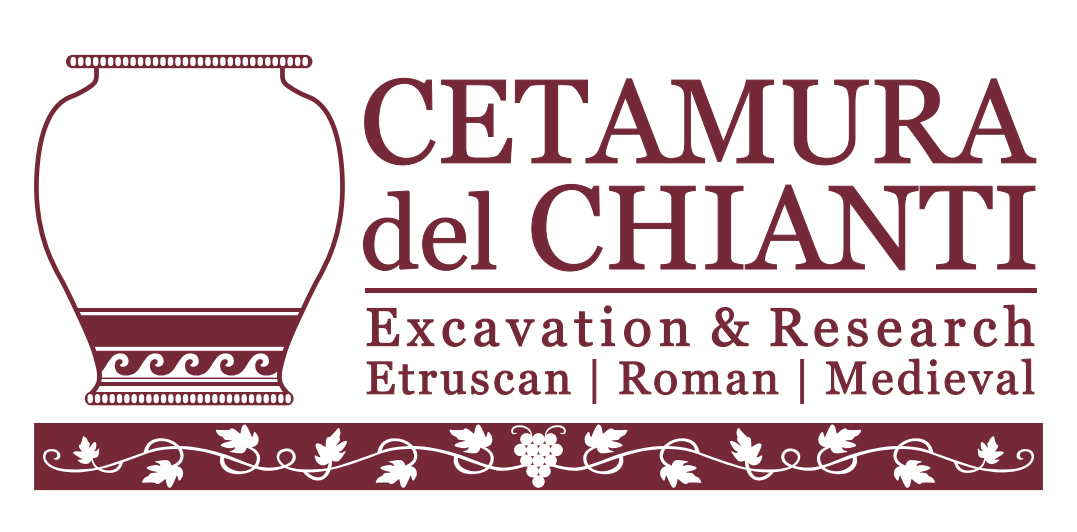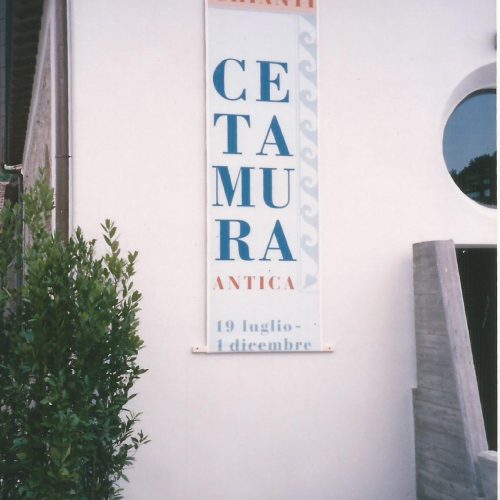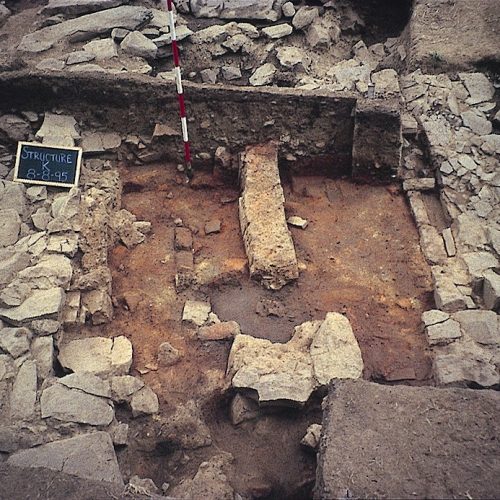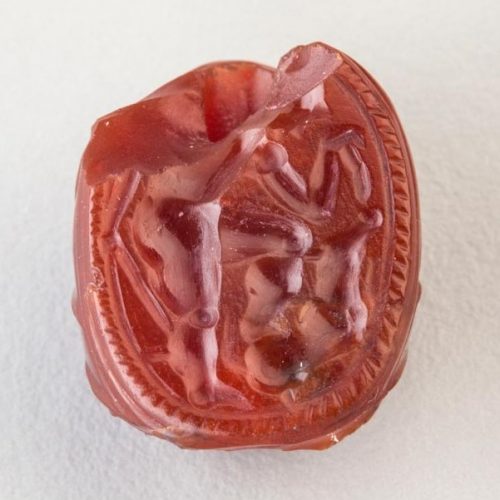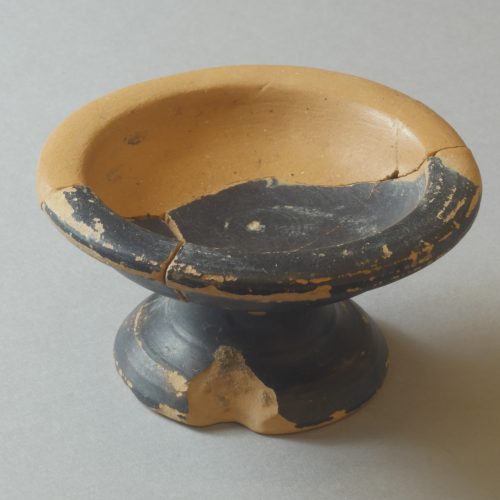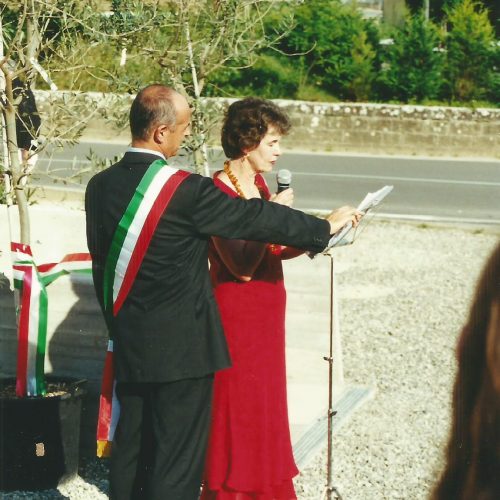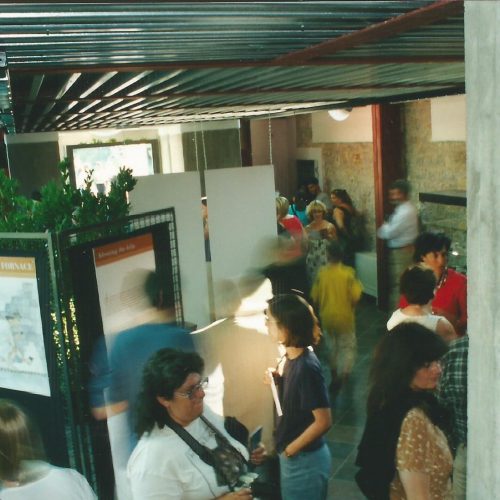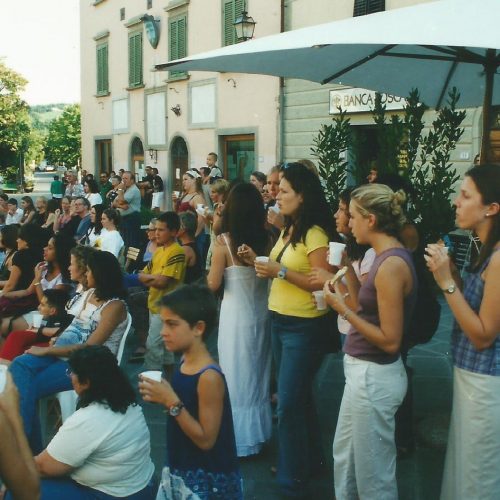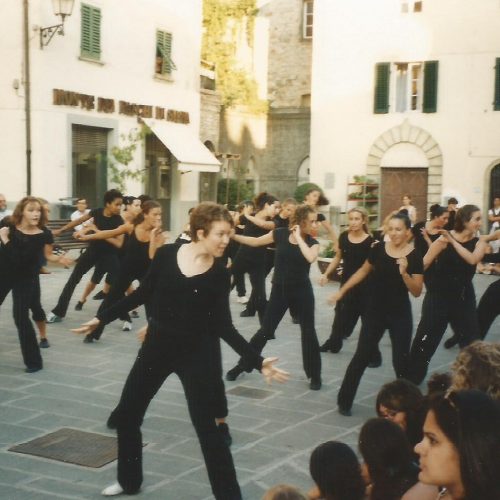MUSEUM
Cetamura Antica, Traditions of Chianti
The first exhibition of finds from Cetamura took place in 2000, more than 25 years after the excavations began, staged at the Centro di Informazione Turistica, Gaiole in Chianti. A detailed description of results obtained up until the year 2000 is provided by the catalogue of the exhibition, Cetamura Antica, Traditions of Chianti. The show was curated By Nancy T. de Grummond, with the assistance of grad student Julia Borek, and designer Ana Gonzalez (Bianchi) of Studio Arts College International (SACI). The event was hosted by Paolo Morini, Mayor of Gaiole [d.], and was well attended by the people of Gaiole and the students and faculty of Florida State University. [e.,f.,g.]. Professor Lynda Davis of FSU brought a troupe of dancers who performed before and after the exhibition [g.].The catalogue, edited by de Grummond, is available in English and in Italian (translated by Alba Frascarelli). Restoration of artifacts was under the direction of Dr. Roberta Lapucci of SACI.
The exhibition followed a theme of traditions of the area of Chianti, stressing the crafts, work habits and daily life of the Etruscan and Roman inhabitants, all very similar to later practices in the region. Cetamura’s most vigorous period seems to be the Late Etruscan period (=Greek Hellenistic), with two phases, ca. 300-150 BCE and ca. 150 to the 1st century BCE.
ETRUSCAN KILN
Of the greatest interest is an artisan’s zone (the Northwest Complex, Zone II), which has yielded a kiln dating to the first phase, ca. 300-150 BCE and other evidence of activity by Etruscan workers [a.]. Nearby were found numerous ceramic utensils related to spinning and weaving, such as spindle whorls, spools and loom weights. Iron slag and iron artifacts provided evidence of the working of metal in the artisans’ quarter.
The kiln, Structure K, is one of some 30 Etruscan kilns known, and provides valuable information about the processes of making brick, tile and ceramic weights for the loom. The rectangular structure is built of irregular sandstone masonry, with exterior measurements of ca. 3.85 x 3m. Numerous fragments of refractory brick were found in and around the kiln. A standard unit of length or module of ca. 33cm seems to have been used in making these bricks; this “Cetamura foot” can be found utilized in other architectural remains at the site preserved well enough to reflect their original measurements.
ETRUSCAN SCARAB AND BLACK GLOSS POTTERY
Of particular interest from the kiln area was an Etruscan cornelian scarab [b.] of the 4th century BCE, carved in the technique of intaglio with an image of a naked hero baiting an animal. Within Structure K itself were found several dozen fragments, scattered throughout the kiln, of an Etruscan black-gloss sacrificial patera, providing a unique instance of the consecration of an Etruscan kiln to the gods. The presence of this type of ritual was confirmed by the discovery within one of the stoking channels (praefurnia) of a tiny votive black-gloss cup, only partially chipped at the rim and on the base, a second example of a vessel of fine ware offered to the gods in hopes that they would spare the large batch of brick, tile and loom weights to be fired in the kiln.
ROMAN BATHS
The exhibition also featured the Roman bathing complex that was probably part of a Roman country villa or possibly a mansio, a rest stop located at a crossing of roads hypothesized as running from Volterra to Arezzo and from Siena to Fiesole. Two rooms contained remnants of an under floor hypocaust heating system with a furnace and drainage system placed in between them. Numerous fragments of box flue tiles and window glass belong to a phase in the mid-1st century CE, but it is clear that the baths had more than one phase.
